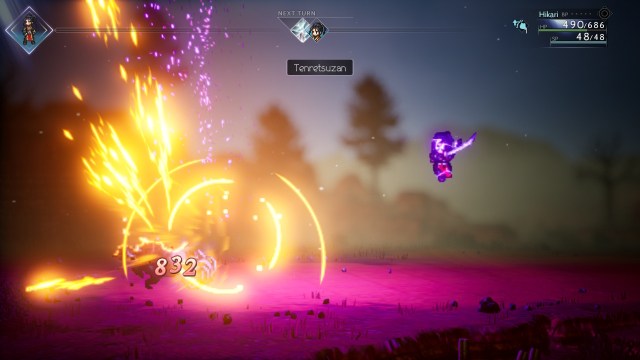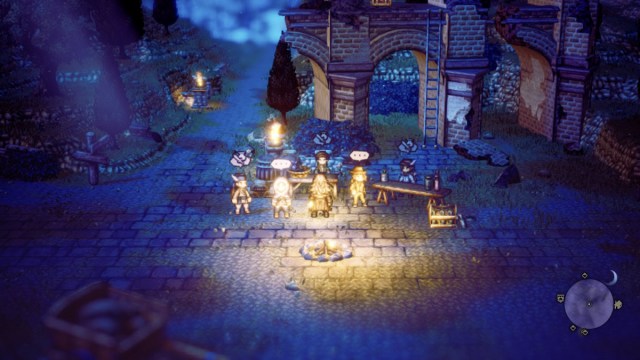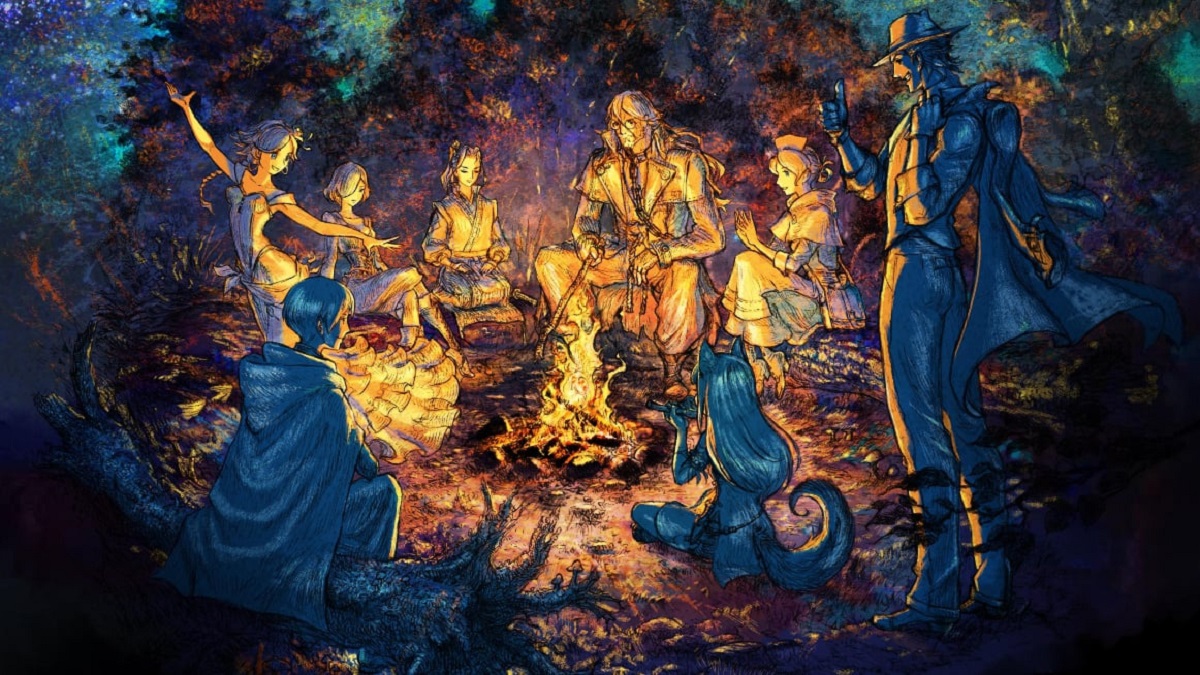Familiar, but with some notable differences
Octopath Traveler 2 is a follow-up to 2018’s Octopath Traveler, and the two share a fair deal of similarities. The sequel adds on some key new features though, some in quite subtle ways and others that create entirely different dynamics.
For those gearing up to dive back into the HD-2D world of Octopath Traveler, some of these changes might feel jarring. Or you might be wondering if something in Octopath Traveler 2 is even a change at all.
Well, for the curious and confused, we’re running down a list of the key differences between Octopath Traveler 2 and the original Octopath Traveler.
The day and night cycle
The most notable shift, and the one you’ll contend with the most often in Octopath Traveler 2, is the time-of-day option. The player is able to change the time of day at will, between daytime and nighttime.
Changing the time isn’t just a cosmetic alteration, though. NPC’s will change location depending on the time of day. More aggressive monsters will emerge during the night. Certain party members will gain power based on what time of day it is, even.
Most notably, each of the travelers has two Path Actions this time around. The Day and Night actions effectively double the ways in which you can interact with the world. While the thief Throné can knock people out at night, she steals from their pockets during the day instead.
The day-night cycle is also completely in your hands, aside from story sections that lock in a certain time. For side quests and adventuring, it’s a good tool to have, to discover solutions and change up the world around you.

Latent power
The adventurers in Octopath Traveler gradually build up power over time, becoming wandering warriors in their own right. In Octopath Traveler 2, this partially manifests in the form of latent power, a mechanic that acts as the individual traveler’s “trump card” of sorts.
Latent power builds up as you break enemies and take hits, and when it’s maxed out, you can engage the power to use the traveler’s special skills. These differ depending on the party member; while one may get to act twice, another may buff allies or replenish resources. These are pretty effective ways of turning the tide of a fight back in your favor, so be sure to make the most of them.
Water travel
Sure, the original Octopath Traveler let you travel by land. But in Octopath Traveler 2, the party will also set out by sea. Water traversal is a big change, as characters can now hop in boats and sail around, in addition to the on-foot travel.
While this effectively just means more area to cover, the sea can hold special and dangerous foes, as we’ve seen in trailers. Plus, I’m just fascinated by where these rafts are even coming from. The lore implications are mind-boggling.
Crossed paths
A frequent issue cited for the first Octopath Traveler is how its characters felt alienated from each other. While you built up the whole party, it didn’t really feel like the group came together until the end.
Crossed Paths are Square Enix and Acquire are building this out in the sequel. These paralogues have the two defined travelers interacting, hanging out, and getting up to adventures together. It’s not romance or anything, but it does let the party members spend a little time around each other.

Job licenses
The last major change is in secondary abilities and classes. While the original Octopath Traveler 2 allowed you to gain secondary job classes through shrines, including a few secret ones, Octopath Traveler 2 uses a license mechanic.
Individual guilds dole out licenses for different jobs, and completing quests for them will unlock these licenses. Alongside those options, there are also some extra secondary jobs you can pick up, with a few being available surprisingly early.
We’re not quite sure how many job options are available in the game just yet, but we’ll keep an eye out and update here as we discover the full range of this system.







